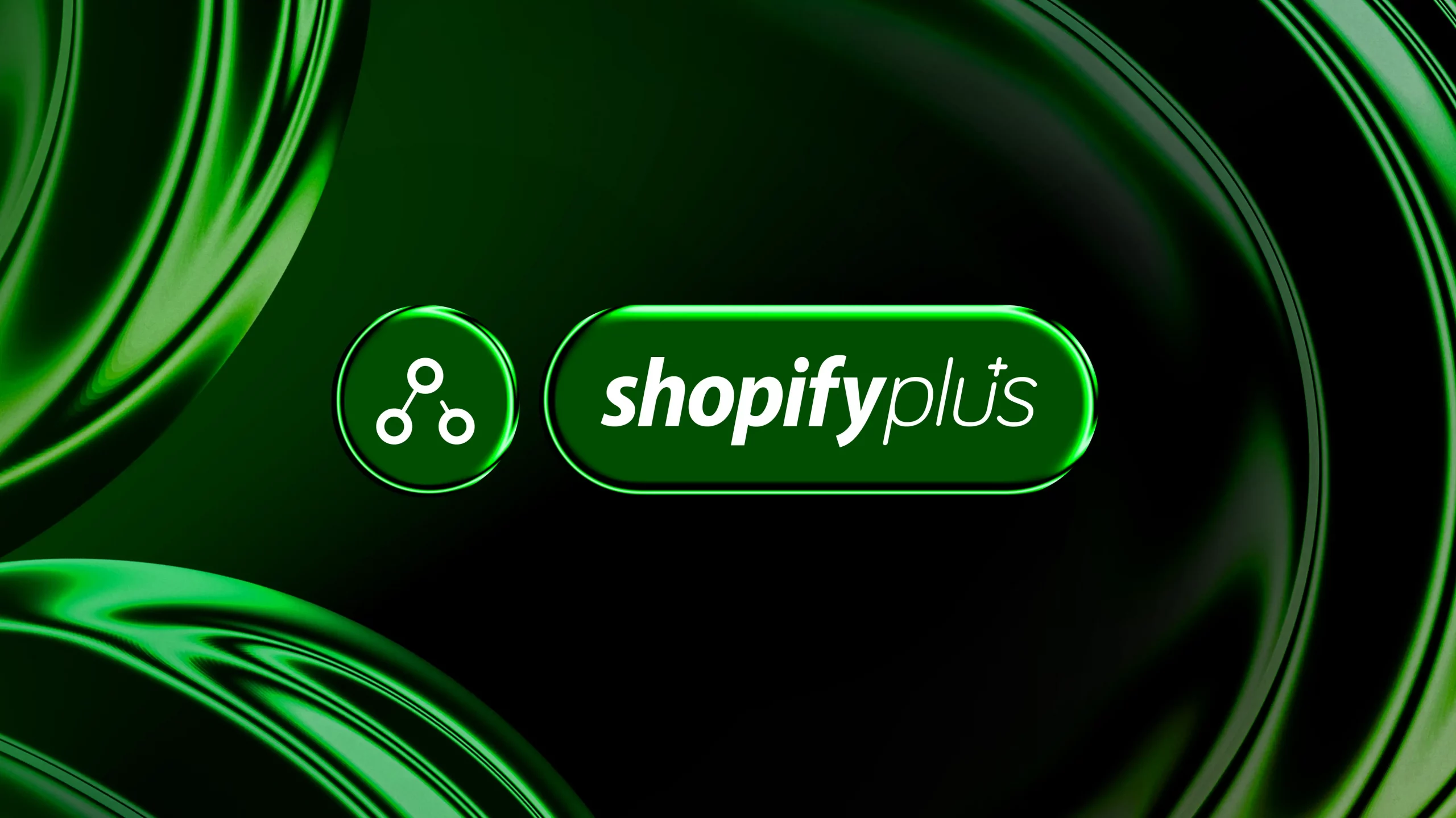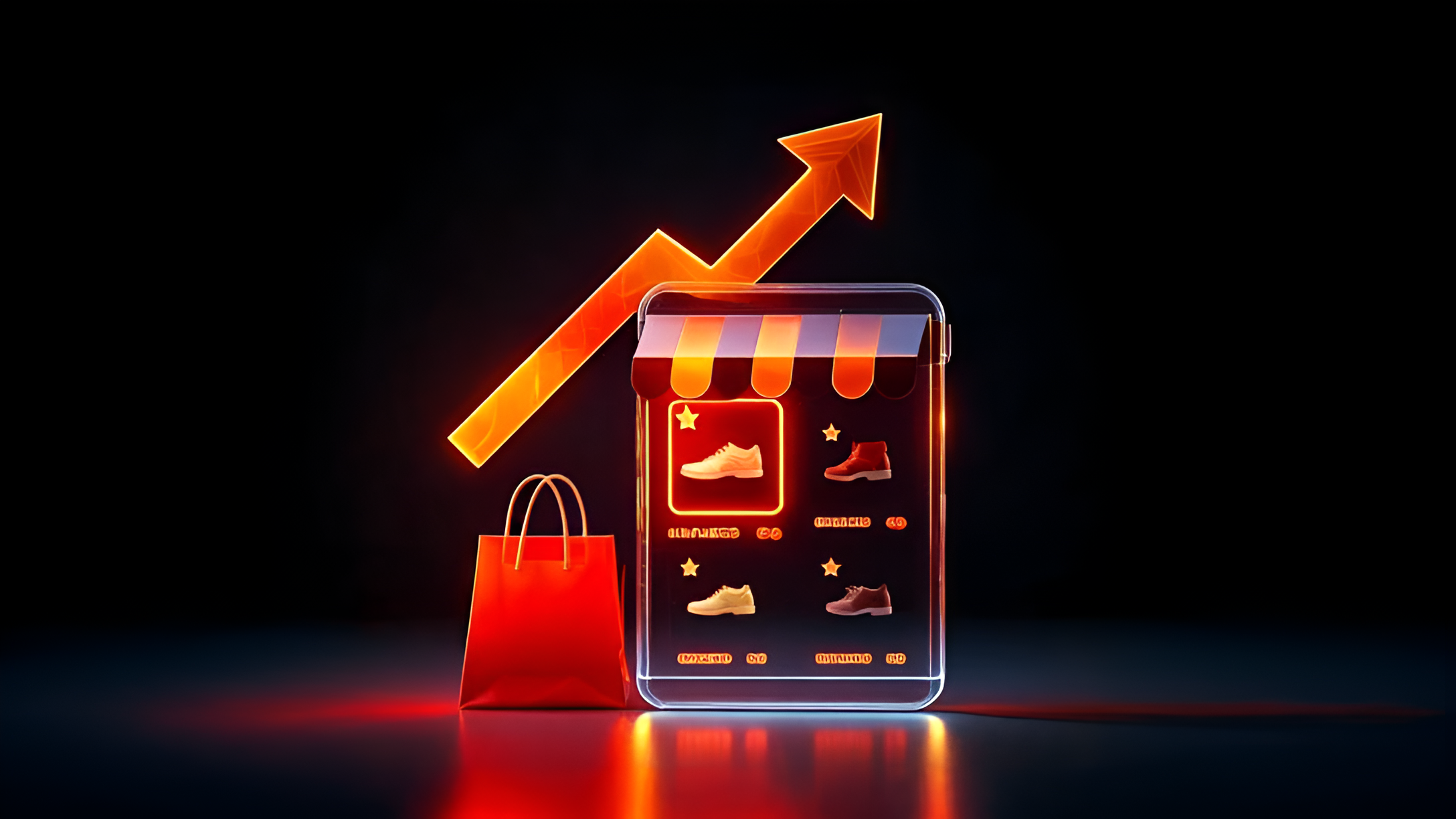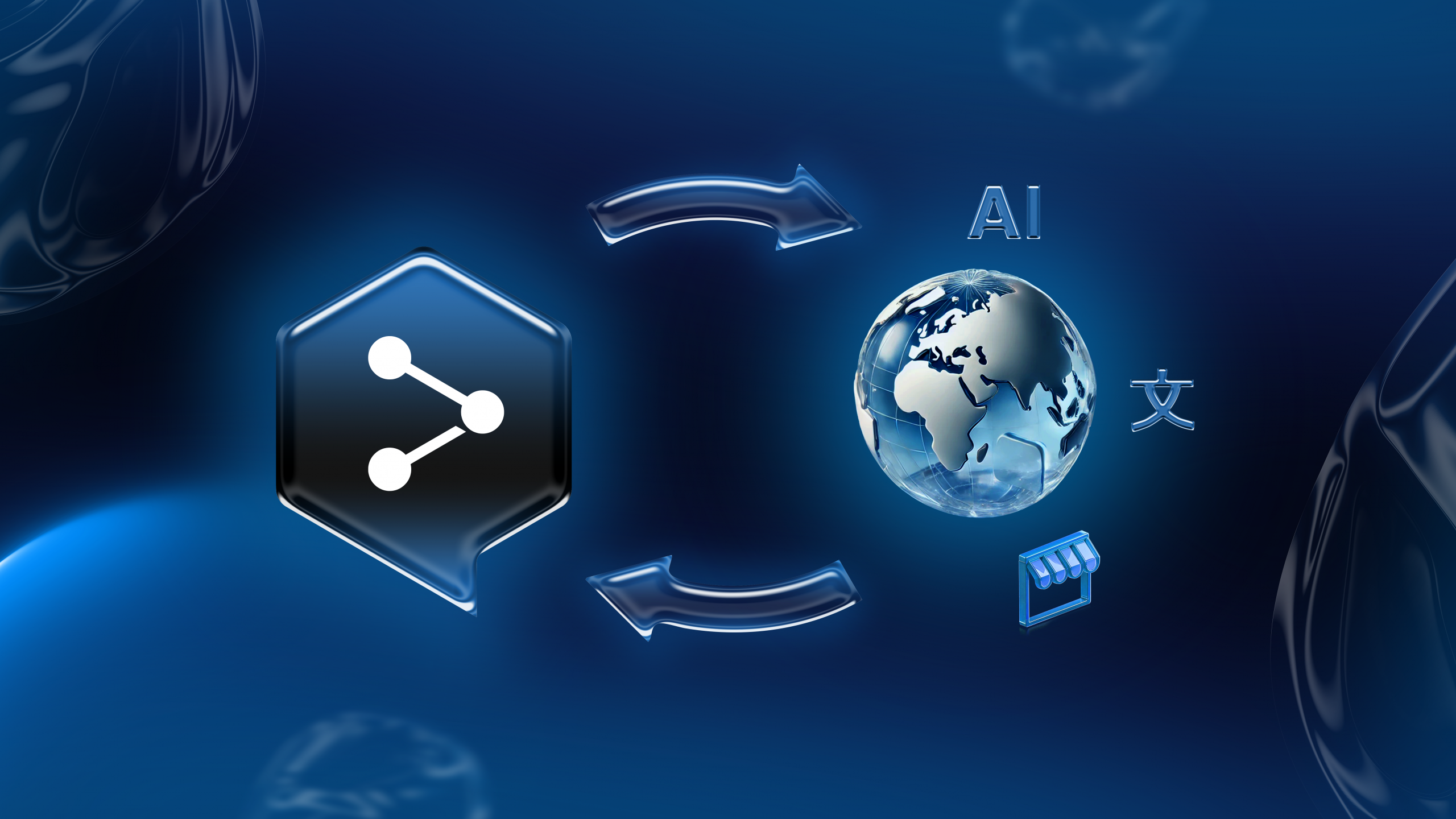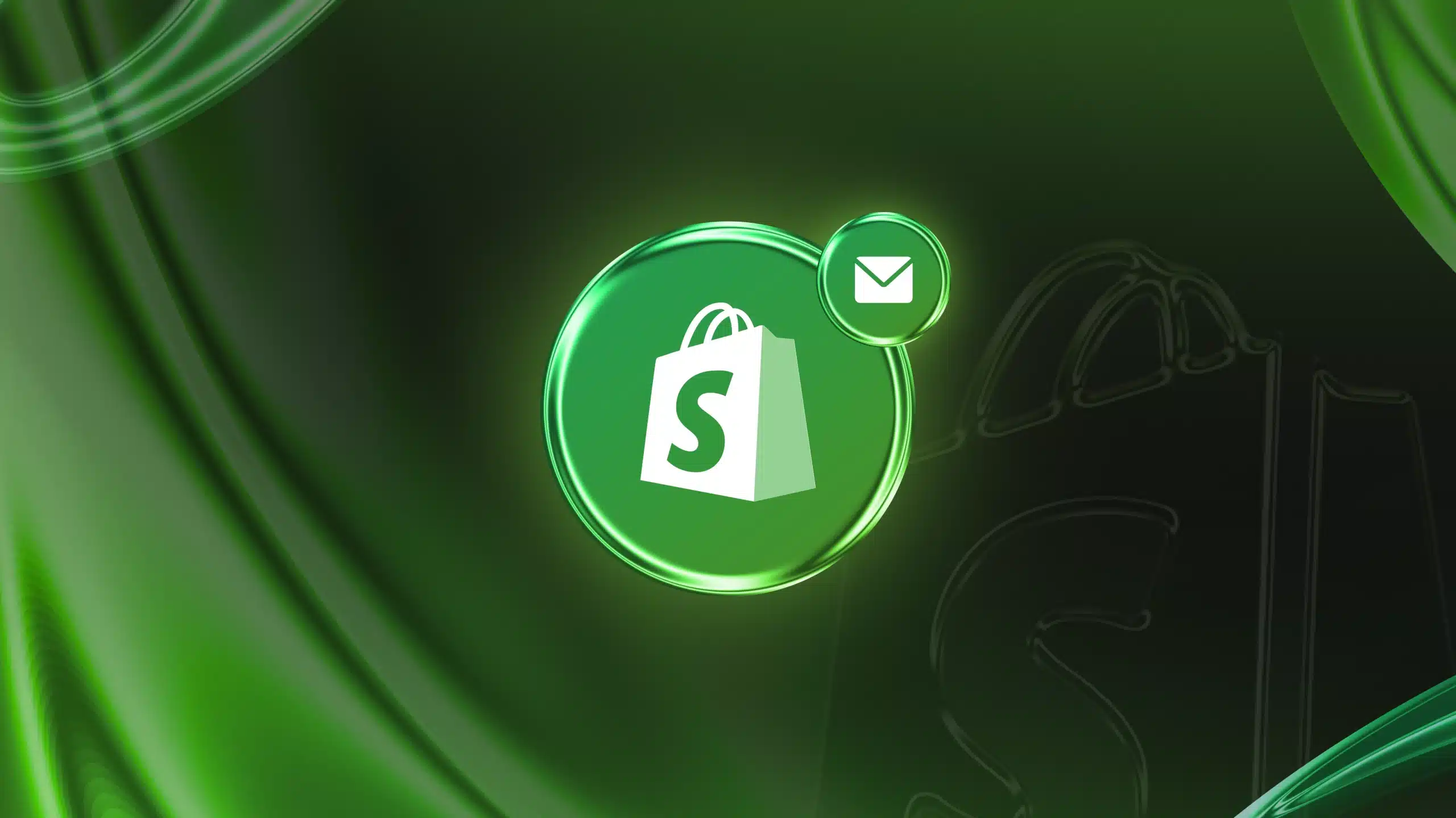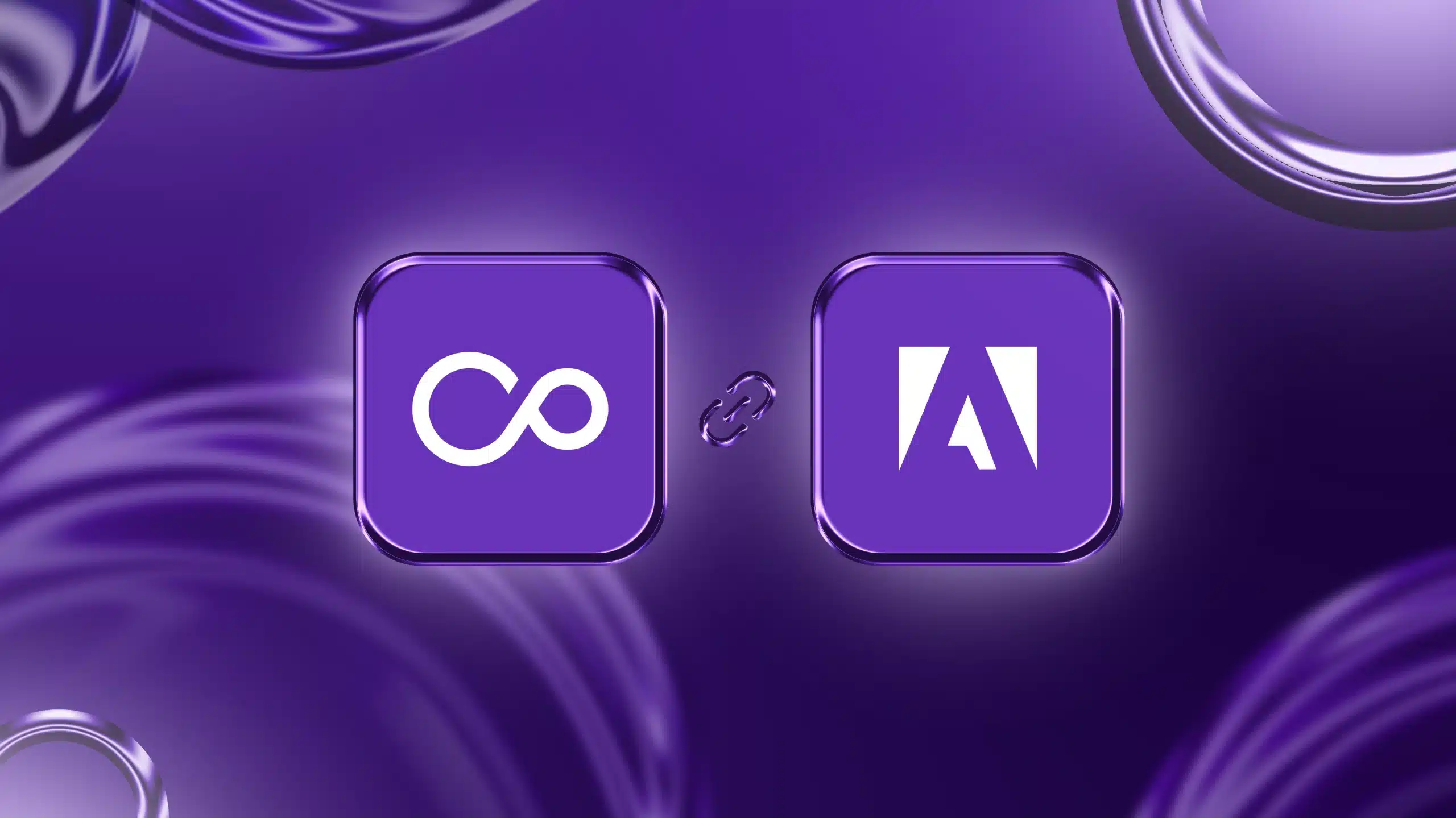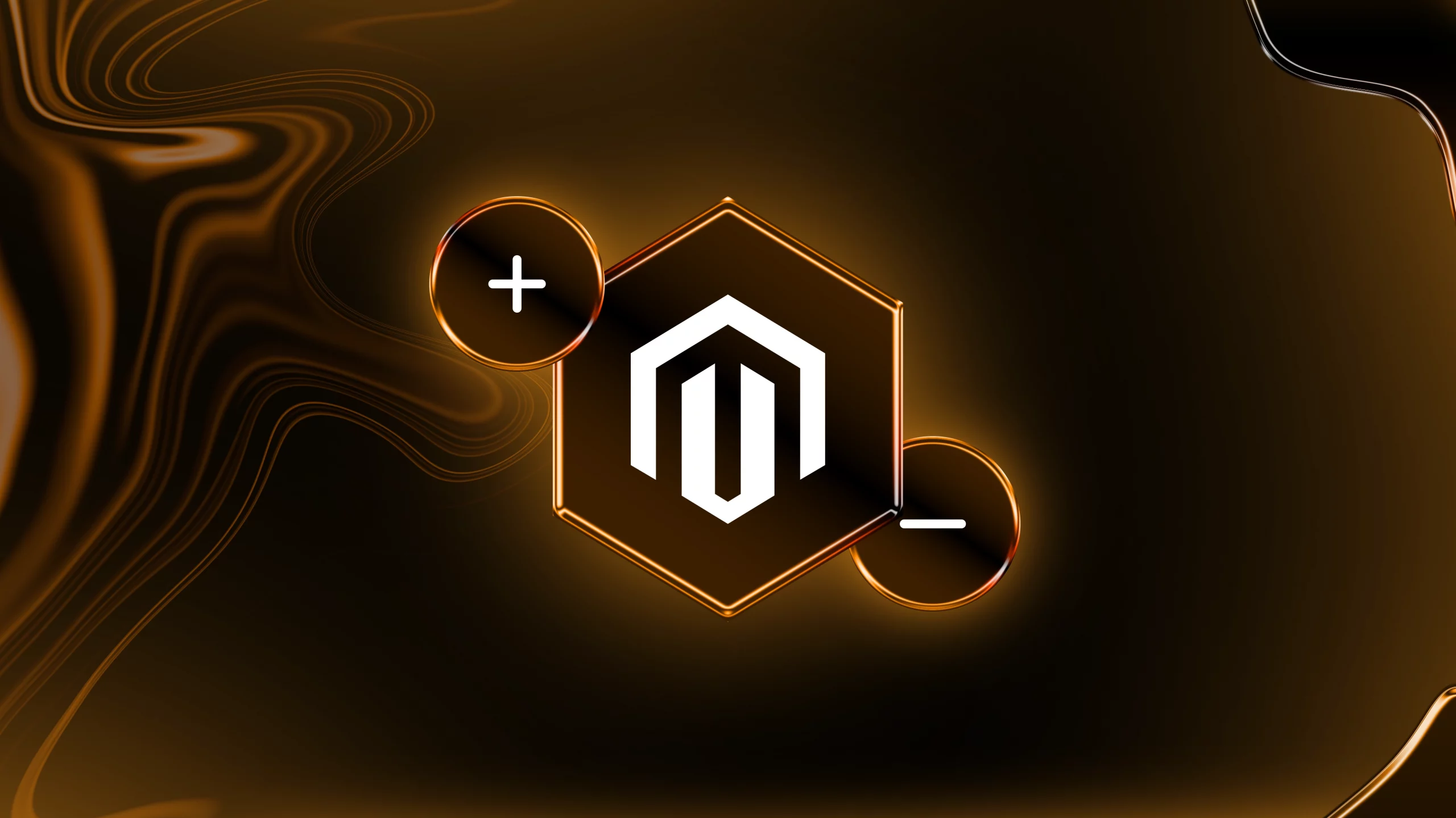Key Takeaways
- Shopify Flow is a no-code automation tool dedicated to Shopify merchants.
- It works on the Trigger → Condition → Action framework.
- It helps automate common eCommerce workflows like customer segmentation, inventory management, and fraud detection.
- Shopify Flow can be integrated with popular third-party apps like Klaviyo, Asana, Slack, etc.
- Shopify Flow offers both pre-built templates and custom workflows.
- Customer engagement, experience, and retention can be enhanced using the tool.
- Shopify Flow can be useful, especially during sales seasons like Black Friday and Cyber Monday.
To run your Shopify store successfully, you need to perform a number of tasks simultaneously. From updating inventory to fulfilling orders, segmenting customers, and detecting fraudulent activities, a lot happens behind the curtain. Doing these important tasks manually is not only time-consuming but also error-prone. That’s where Shopify Flow shines bright as it offers unparalleled no-code automation to simplify operations and free time for Shopify merchants.
Sit tight as we explain Shopify Flow in detail, including its features, key components, workflow, use cases, and more.
What is Shopify Flow?
Dedicated to Shopify merchants, Shopify Flow is an excellent automation tool that equips businesses to configure automated workflows. These workflows work on triggers and conditions to execute any specific action. Shopify Flow can be a groundbreaking tool for businesses to save time, minimize errors, and maximize operational efficiency.
Main Components of Shopify Flow
Following are the key components of Shopify Flow, which are combined to build different workflows that ensure tasks are automated without any manual intervention.
- Triggers: Triggers are the events that instigate a workflow.
- Conditions: Conditions are the rules set to decide whether or not an action should continue.
- Actions: Actions are the automated response based on the trigger.
Why Use Shopify Flow to Automate Your Online Store?
Shopify Flow is an intuitive tool that simplifies workflows with no-code automation. Shopify Flow comes with many benefits.
Saves Time and Boosts Efficiency
It takes a huge amount of time to manage inventory, tag customers, or process orders manually. Shopify Flow automates all these repetitive tasks to make sure you and your team save time to focus on business growth.
Reduces Human Errors
While handling such large amounts of data, mistakes are inevitable. However, a single error in discount applications, order fulfillment, or fraud detection can be costly for businesses. The Shopify Flow automation ensures that accuracy and consistency remain at par across all operations.
Offers Personalized Customer Experiences
Shopify Flow can automate customer segmentation based on their behavior! This helps businesses to conduct more targeted email campaigns and offer more personalized loyalty rewards and effective promotional discounts.
Helps with Business Scalability
Handling operations manually becomes impossible as the store scales. With so many operations running on a large scale, you need the automation magic of Shopify Flow to reduce the workload and enhance efficiency at the same time.
Key Features of Shopify Flow
Following are the top features offered by Shopify Flow to enhance operations and increase efficiency through automation.
No-Code Automation
Shopify Flow comes with a drag-and-drop interface, which means you don’t need to be a coding ninja to use the tool.
Ready-Made Workflow Templates
The automation tool has a number of pre-built templates that take care of the most common automation scenarios, from abandoned cart recovery to fraud detection and order fulfillment.
Multi-App Integrations
It integrates with external apps like Asana, Slack, Klaviyo, etc., which add to its automation capabilities.
Real-Time Triggers and Conditions
Shopify Flow ensures that your workflows are highly responsive to specific activities in the store. It helps businesses in automating processes in real-time.
How Does Shopify Flow Work?
Trigger – Condition – Action. That’s the mechanism Shopify Flow follows to automate various tasks. Let’s take a look at an example workflow.
- Trigger: A customer makes a purchase of more than $500.
- Condition: If the customer has made more than three purchases previously.
- Action: Tag the customer as VIP and send a personalized email.
This is an example workflow. Businesses can create powerful automation sequences by linking multiple workflows like the above.
How to Configure Shopify Flow
Here’s a step-by-step process to set up Shopify Flow. If you need any help, you can hire best shopify plus developers.
1. Install Shopify Flow
Install Shopify Flow from the Shopify App Store. Any Shopify merchant can access the tool.
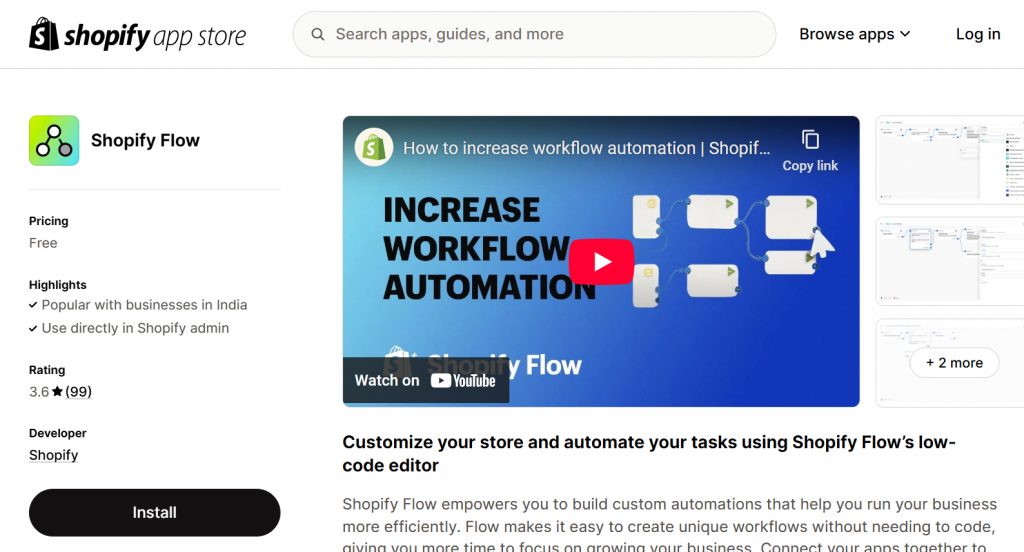
2. Spot the Automation Opportunities
Identify the repetitive tasks that could be automated. For example:
- Tagging high-value customers
- Updating inventory
- Sending follow-up emails
3. Create Workflow
Option 1: Modify Pre-Built Shopify Flow Templates:
- Use one of the ready-to-use templates (for common tasks) provided by Shopify to quickly create your workflow.
- Modify the triggers, conditions, and actions based on your specific requirements.

Option 2: Build from Scratch
If your workflow does not match the templates, create your own from scratch. Use a blank workflow and add your own trigger-condition-action sequence.
4. Test and Optimize
Test your workflow on a few operations and transactions to make sure it is executed accurately.
Important Shopify Flow Templates and Use Cases
Automated Inventory Management
One of the most crucial use cases of Shopify Flow, inventory management automation makes sure that you don’t need to monitor stocks manually.
Here’s an example of how it works:
When a product stock goes below the set threshold, the system auto-triggers a notification to the inventory manager or even marks the product as “Sold Out”. This ensures that no product is oversold and the stocks are always maintained.
Customer Segmentation and Tagging
Customer segmentation is another trademark Shopify Flow use case that offers huge benefits to businesses. Customer segmentation and tagging improve customer engagement while increasing repeat purchases.
Here’s an example of how it works:
The workflow can be set in a way that when a customer makes a purchase for the third time, the system tags them as a “Loyal Customer.” This can trigger an automated ‘Thank You’ email along with a personalized discount code or coupon.
Fraud Detection and High-Risk Order Handling
With the Fraud Detection workflow, merchants can add an extra layer of security to the store by flagging high-risk orders. This eliminates the need for continuous monitoring while avoiding potential losses.
Here’s an example of how it works:
You can create workflows with fraud detection criteria. When an order matches the criteria, the system can send an alert to the team, mentioning the same while putting on hold to the order. The team can manually check the orders before taking action.

Order Fulfillment Notification
The order fulfillment notification builds and maintains smooth communication between the store and the customers. This works effectively to reduce customer queries and enhance transparency.
Here’s an example of how it works:
After an order is marked as fulfilled, an automated email is triggered to the customers with tracking details.

Abandoned Cart Recovery
When customers leave items in their carts, Shopify Flow can identify those customers to trigger an automated email. These emails can contain a gentle reminder to complete the purchase. You can even include a limited-time discount in these emails to improve the conversions.
Advanced Shopify Flow Integrations
Shopify Flow can be integrated with the top tools to deliver even better user experiences while optimizing the workflow.
Integration with Klaviyo
Integrating Shopify Flow with Klaviyo results in data-driven, automated email marketing. For example, if a customer buys a high-value product, Klaviyo can send a set of automated follow-up emails, which can include product manuals, care tips, other product recommendations, etc. This ensures customer engagement even after the purchase.
Integration with Slack
By integrating Shopify Flow with Slack, you can make sure that your team is always updated on important store activities. From high-value product purchase notifications to fraud detection alerts, Slack can keep your team informed at all times without failure to improve security and customer experiences.
Integration with Asana
Integration with Asana can empower businesses to automate task assignments, saving manual efforts and time. When a customer places an order, the system can create a task and assign it to the production team along with a deadline. This automation can lead to a smoother workflow.
Shopify Flow Best Practices
Start Small and expand: When it comes to Shopify Flow, starting small is always the best option. Start with the important workflows like inventory notifications and fraud detection and gradually expand to more complicated workflow automations.
Regular monitoring and optimization: Monitor your workflow regularly and make optimizations accordingly to ensure that the automation delivers the desired results. As the operation evolves with time, make sure you are modifying the workflow aligned to your new requirements.
Combine multiple workflows: When to combine multiple workflows, it can deliver even greater efficiency. For example, if you combine the customer segmentation workflow with personalized email marketing, it can ensure effective communication with shoppers based on behavior.
Shopify Flow for Seasonal Sales & Promotions
During sales events like Black Fridays or Cyber Mondays when your platform gets a high volume of traffic, Shopify Flow can be a great help! From adjusting product prices according to flash sales to tagging high-value customers for promotional discounts and sending alerts for low stock, Shopify Flow can automate a number of crucial tasks.
The automation ensures minimum manual workload while guaranteeing a smooth shopping experience for customers.
Real-World Success Stories
Let’s take a look at how brands and individuals have leveraged Shopify Flow to enhance their customer experience and engagement through automated workflow.
Pigment (Home & Beauty Brand)
Pigment saw a significant improvement in stock accuracy and reduced fulfillment errors by automating their order processing and inventory management through Shopify Flow.
Full Cycle (Bike Store)
By implementing customer segmentation workflows, Full Cycle sent automated emails with personalized product recommendations based on previous order history, which led to increased sales.
Jonah Blossom (Entrepreneur)
Entrepreneur Jonah Blossom automated loyalty rewards with Shopify Flow, which helped him get an increased customer retention rate and repeat orders.
Conclusion
Shopify Flow is a groundbreaking tool to reduce manual labor and automate repetitive tasks. Its no-code interface is straightforward and easy to understand. Moreover, Shopify Flow’s integration capability with top third-party tools makes it a must-have for many businesses. If you are a Shopify merchant, leverage Shopify Flow to enjoy powerful automation and increased customer engagement and business growth. It’s time to take your Shopify store to the next level with Shopify Flow.
